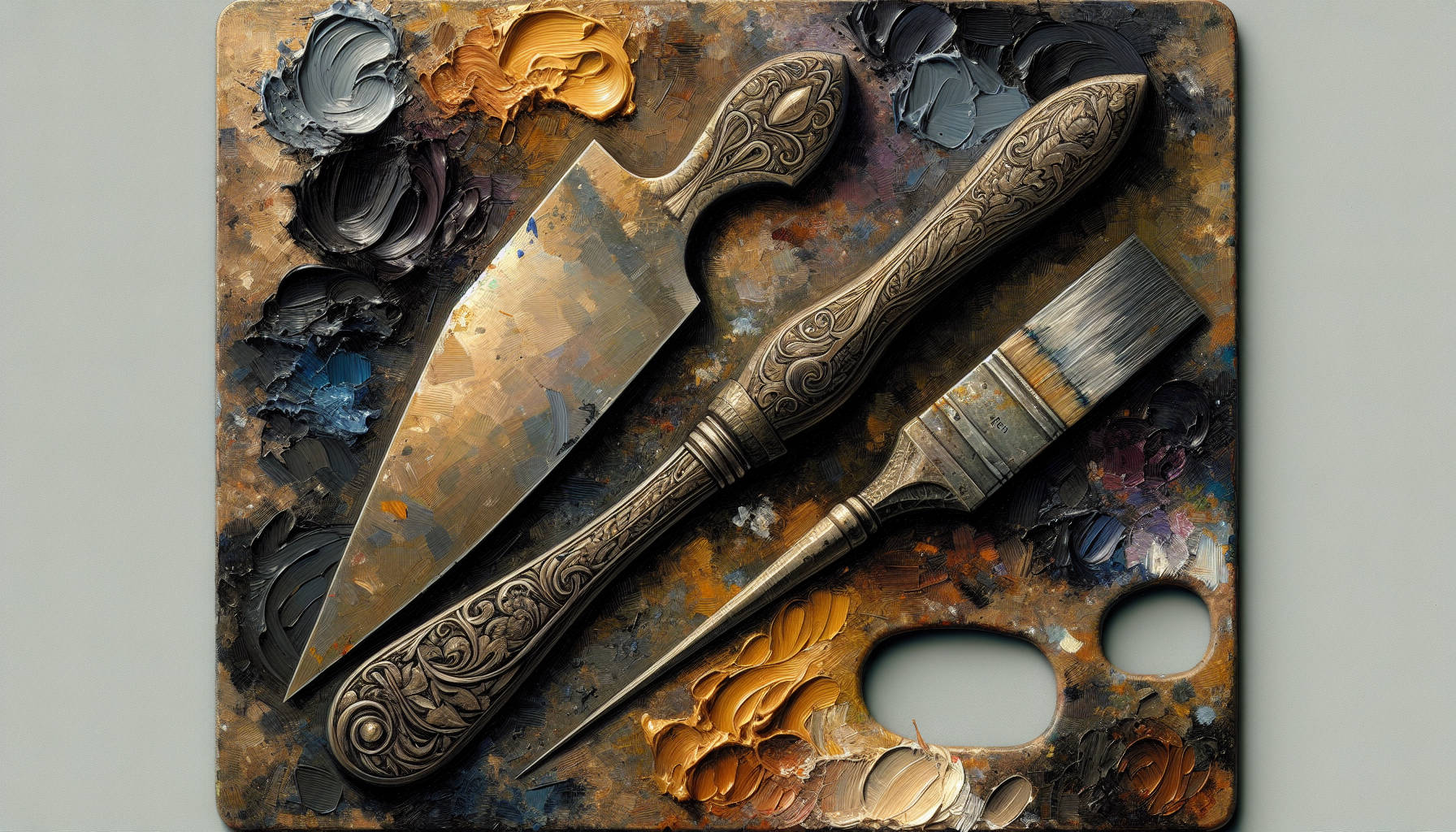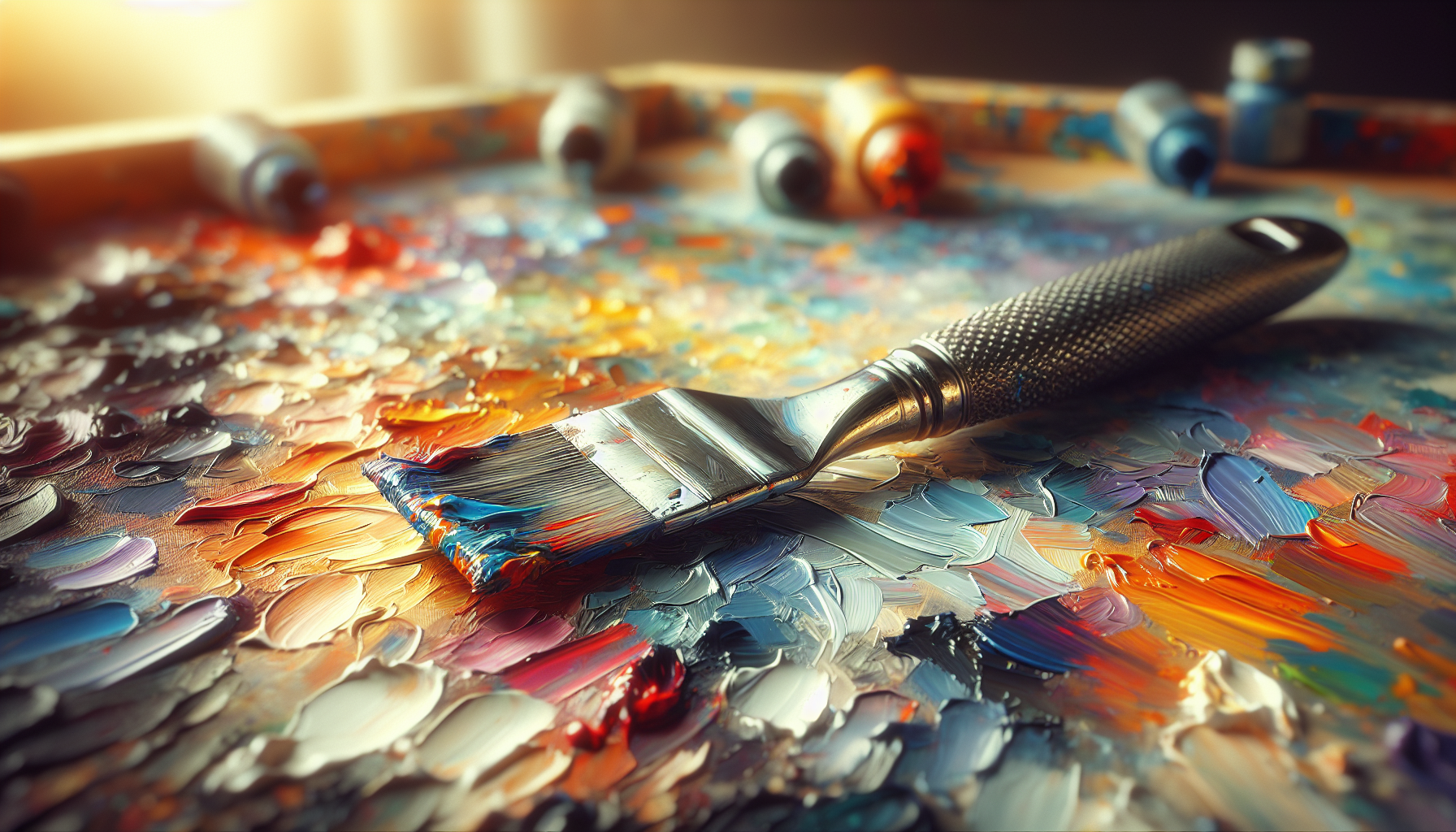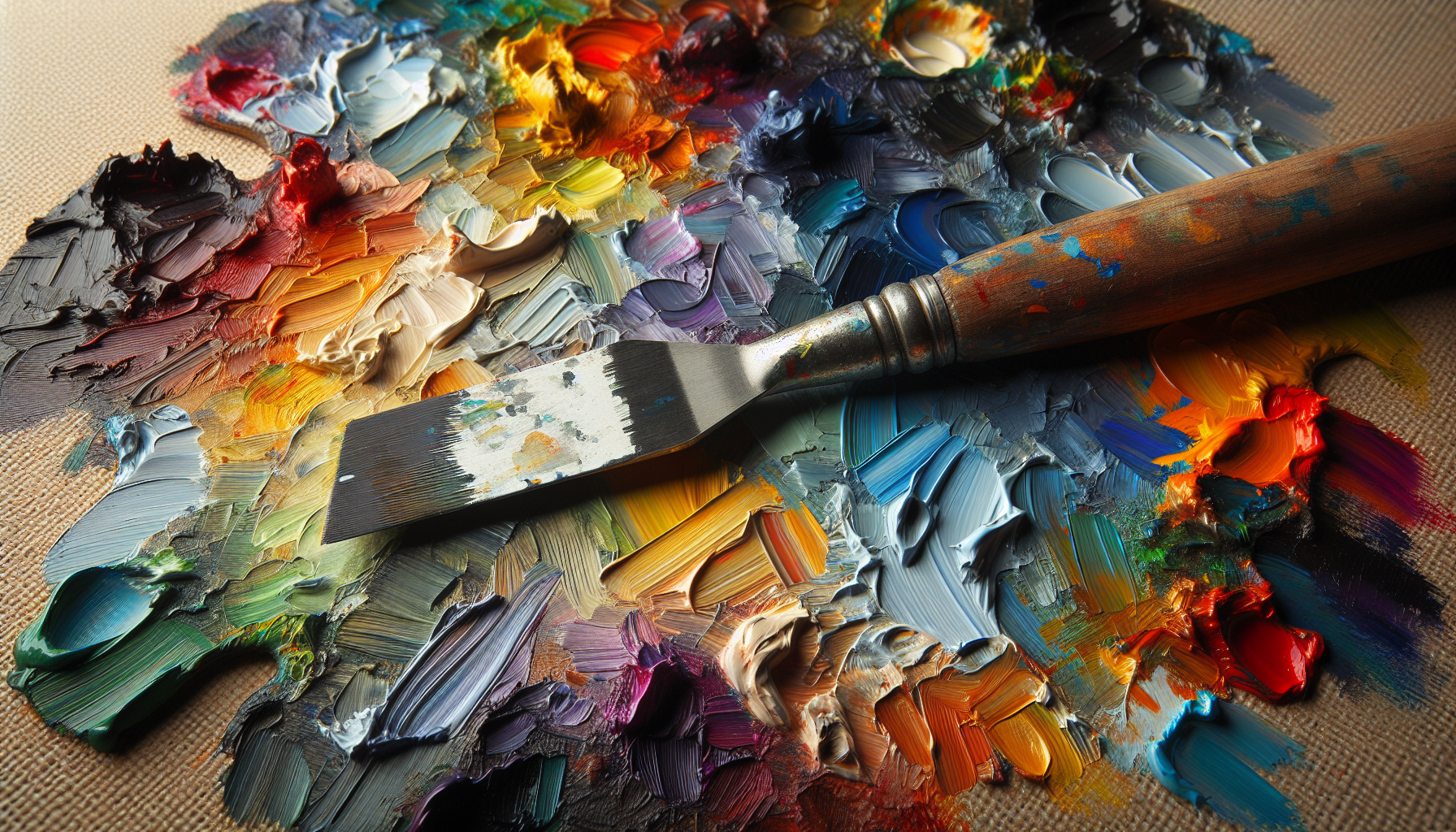Have you ever wondered about the tools that artists use to create their masterpieces? Particularly, have you pondered over the differences between a palette knife and a painting knife? Understanding these differences is essential for both aspiring artists and curious observers to grasp the nuances of painting techniques and the tools employed in this artistic process.
Understanding the Basics
To fully appreciate the distinction between a palette knife and a painting knife, it’s imperative first to understand what each tool is and its primary purpose. While they may appear similar at first glance, these tools serve unique functions and have distinct characteristics that set them apart.
What is a Palette Knife?
A palette knife is an artist’s tool that is traditionally flat, with a flexible steel blade, used to mix colors on the palette. The primary function of a palette knife is to facilitate the blending of pigments, not applying the paint onto the canvas. Its flexibility and flat nature allow artists to mix colors thoroughly, achieving the desired tones and shades needed for their work.
What is a Painting Knife?
In contrast, a painting knife is designed explicitly for applying paint directly to the canvas. It is more robust, frequently wider, and often angular. This tool allows artists to apply paint in thick, textured layers, helping create bold and expressive artwork. A painting knife offers more versatility in the techniques artists can employ, such as creating sharp lines, bold textures, and complex patterns.
Key Differences Between Palette Knife and Painting Knife
Despite their similarities in appearance, palette knives and painting knives have several key differences, mostly revolving around their design and intended use.
| Aspect | Palette Knife | Painting Knife |
|---|---|---|
| Primary Purpose | Mixing colors on a palette | Applying paint to the canvas |
| Blade Shape | Flat, straight-edged | Often angular, with a more varied shape |
| Blade Flexibility | More flexible to aid in mixing | Stiffer to facilitate paint application |
| Usage Technique | Used more like a culinary knife | Used much like a brush for applying paint |
| Common Materials | Stainless steel, flexible materials | Stainless steel, occasionally with a stiffer blade |
Design and Structure
Blade Shape:
The blade shape is one of the most noticeable differences between the two tools. Palette knives typically have a straight, flat-edged blade. In contrast, painting knives often feature an angular and varied blade, aiding in the precision needed for detailed paint application.
Blade Flexibility:
While both knives are generally made of stainless steel, palette knives are more flexible, designed for easy manipulation of paint mixtures. Painting knives, being directly involved in the application process, tend to have a stiffer structure to allow a significant degree of control over paints of varying viscosities.

Application Techniques
Understanding how these knives are used in practice helps further delineate their roles in artistic expression.
Palette Knife Techniques
-
Color Mixing: The primary use of a palette knife is to mix different paints on a palette to achieve the desired shades. This mixing is crucial to produce consistent hues and tones.
-
Canvas Cleaning: Artists often use palette knives to scrape off old paint layers or make minor adjustments, maintaining a clean painting surface before applying new paint.
-
Surface Preparation: Palette knives can be used to apply mediums over a canvas, preparing it for painting.
Painting Knife Techniques
-
Textured Application: Painting knives offer an ability to apply paint in textured, three-dimensional forms, adding depth and interest to a piece.
-
Variety of Strokes: With painting knives, artists can create an array of strokes, varying in width, depth, and direction, essential for achieving certain artistic effects.
-
Creating Impressions: The unique shapes of painting knives allow artists to stamp images onto the canvas, adding to the complexity of the artwork.
Advantages and Disadvantages
Each tool brings with it a set of advantages and limitations that influence an artist’s decision to use one over the other.
Advantages of a Palette Knife
- Ease of Use: Its simplicity in design makes it intuitive for mixing colors.
- Versatility in Mixing: Suitable for both heavy and light media.
- Durability: Less prone to wear since it does not contact the canvas as frequently as a painting knife.
Disadvantages of a Palette Knife
- Limited Artistic Application: Primarily restricted to mixing and minor scraping tasks.
- Less Control in Painting: Not ideal for delicate or intricate painting processes.
Advantages of a Painting Knife
- Textural Richness: Excellent for creating dimensional and textured artwork.
- Versatility in Painting Styles: Allows for the exploration of varied techniques, from soft pastels to bold expressionism.
- Unique Artistic Effects: Capable of producing sharp lines, impasto effects, and impressionistic textures.
Disadvantages of a Painting Knife
- Learning Curve: Requires practice to master different techniques.
- Potential for Paint Waste: Applying thick layers can lead to increased paint use.

Choosing the Right Tool for Your Artwork
Deciding between a palette knife and a painting knife ultimately depends on your artistic goals, personal preference, and the style of artwork you wish to create.
When to Use a Palette Knife
- When working primarily with color mixing and blending on the palette.
- In scenarios where precision in application is not the primary focus.
- For tasks that require minor adjustments or cleaning of the painting surface.
When to Use a Painting Knife
- When your focus is on creating textured, expressive pieces.
- When you need to apply paint in bold, defined strokes.
- When exploring different artistic effects within a single composition.
Enhancing Artistic Expression
Combining both tools can significantly enhance artistic expression, allowing for a multifaceted approach to painting.
Blending Techniques
Artists often employ both knives interchangeably within a single art piece, using the palette knife to mix precise colors and the painting knife to apply those colors with texture and depth.
Layering and Texturing
Using a painting knife permits layering, which adds dimensionality and depth, creating pieces that capture light and shadow exquisitely.
Achieving Precision and Fluidity
Palette knives can aid in producing fluid transitions between colors, while painting knives offer the precision needed for specific details or bolder structures.
Conclusion
Understanding the differences between a palette knife and a painting knife enriches the artist’s toolkit, equipping them with the knowledge to choose the appropriate tool for their artistic needs. While a palette knife’s role is pivotal in setting up the foundation of colors, a painting knife allows the artist’s creative expression to flourish in its application. Whether your canvas is a traditional frame or an experimental surface, mastering both tools offers infinite possibilities for creative exploration and expression.
Through the proper use of these tools, you amplify your artistic capabilities, ultimately developing a more nuanced understanding and appreciation of the vast possibilities painting offers.


